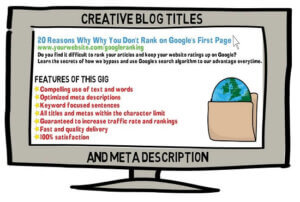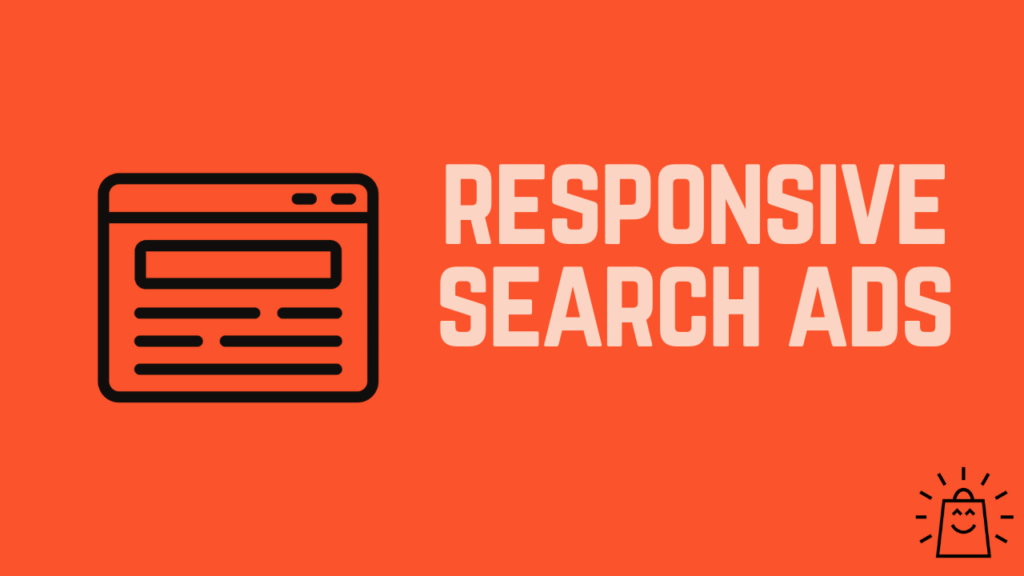As marketers, we’ve been discussing personalization and responsive advertising for quite some time. And this is not a fad. In 2019, 72 percent of display advertisements were responsive (more than double what they found just two years previous). Furthermore, people’s search habits are evolving. Google discovered that 15% of search queries are new searches that they have never seen before. As a result, beginning June 30, 2022, responsive search ads will be the only type of search ad that can be created or edited in Google standard search campaigns. The goal of this change is to simplify the process of creating search ads and make it easier to drive performance.
Many marketers still don’t know what are responsive search ads? To get ready for this upcoming change, let’s define responsive search ads and discuss best practices for creating them.
What is the meaning of Responsive Search Ads?
A type of ad in which an advertiser can write multiple headlines and descriptions for a search engine ad is a responsive search ad. It means that you can have 15 different title variations and four different descriptions for a single ad.
The goal is to display a different combination of titles and descriptions for each user based on their unique queries and search history. Google will show 32,760 different ad versions by alternating between the titles and descriptions. After that, the search engine will determine the most effective title and description combination and use it the most frequently.
Responsive search ads are a straightforward and strategic approach to developing an effective PPC marketing strategy. With the most effective ad version, you can increase engagement and reach more potential customers.
Dynamic Search Ads Vs. Responsive Search Ads
Responsive search ads and dynamic search ads are not the same things. Again, responsive search ads are created when you create multiple versions of your title and description, and Google alternates between them.
Dynamic search ads are when Google generates a headline for an ad that you did not write based on the content and search query.
Responsive search ads are excellent for raising brand awareness and generating leads, whereas dynamic ads are useful for content and keyword-based pages.
You may be wondering what the advantages of responsive search ads are? Let’s check them out
The benefits of responsive search ads:
#1 Personalized Search Ads:
Personalization is one of the primary advantages of responsive search ads. Because 90 percent of U.S. consumers find marketing personalization very or somewhat appealing, it’s critical to personalize your ads as much as possible.
The display of responsive search ads is determined by a user’s search history, previous clicks, device type, and search query (keywords used). Google will use the most relevant title and description you wrote. Furthermore, responsive search ads can be customized based on a user’s current location, regular location, or location of interest.
It means that responsive search ads will provide you with a more personalized ad experience.
#2 Search ads that are optimized for the device type:
Similar to the previous point, when a user searches on their mobile device rather than a computer, the device size is different (shocking, I know).
It means they will see less of your ad’s title and description. You can allocate smaller-width headlines and descriptions for the mobile experience with responsive search ads.

Finally, you’ll have more space to share your message and, hopefully, a higher click-through rate (CTR) across all device types.
#3 Simple A/B Testing:
As previously stated, Google will use thousands of variations of your search engine ads with responsive search ads. This means that Google will automatically test different versions of your ad, eliminating the need for you to micro-analyze CTR or impressions.
According to Google- responsive search ads have resulted in 6% more clicks and a 5% increase in CTR.
This ad type will save you time because Google will do the testing for you. Also, it will produce better results.
#4 Take part in more auctions to reach more customers:
Your ads will compete in more auctions, match more queries, and ultimately reach more customers if you include more headlines and descriptions. One of the primary advantages of using responsive search ads is that you can increase your reach while also increasing your results.
So we now know that responsive search ads are here to stay and can help you change your PPC strategy. But how do you write the best responsive search ads to ensure results? Let’s take a look at some best practices to get you started.
What are the best practices for responsive search ads?
#1 Use unique titles and descriptions to create variation
Because one of the primary advantages of responsive search ads is the variety in writing 15 headlines and four descriptions, those titles and descriptions must be unique.
The goal is to incorporate as much variety as possible. Try out different CTAs, highlight various features, use different keywords, have different header lengths, and so on.

Having unique titles and descriptions (rather than very similar ones) will result in higher rankings because Google can determine which ones are more effective.
#2 Experiment with different header lengths and description types
As previously stated, it is critical to experiment with different header lengths. You should include shorter versions of your titles for mobile devices and longer versions for desktop computers.
You can also experiment with different types of descriptions. These can include product descriptions with special offers, discount codes, and savings, as well as product benefits and features.
#3 Entice users with different offers in your descriptions
Using offers and discounts for responsive search ads is a great strategy. You can test which special offers or discounts work best by including several in your descriptions. Depending on which version performs better, Google begins to prioritize that description over the others.
#4 Use concise and simple CTAs
CTAs in the best responsive search ads are brief and straightforward. These should be brief CTAs, such as “Get Free Shipping Now,” “Save Now,” or “Why Pay Full Price?” 70 percent savings “Right now!”

Concise CTAs perform better on PPC ads in general, so continue to use those types of CTAs for your responsive search ads.
#5 Include product features, keywords, and other advantages
It’s critical to include keywords in your headlines and product features or benefits in your descriptions to drive results with responsive search ads. This will allow you to match multiple queries, expand your reach, and ultimately drive more results from your responsive search ads.
#6 Utilize existing content from high-performing advertisements
You’ve almost certainly done PPC advertising before. Look for your best-performing ads and incorporate some of that content into your responsive search ads. This is the best practice for many types of PPC advertising, including responsive search ads.
In the world of search engine advertising, responsive search ads are becoming increasingly popular and important. Consider how you can use these ads to improve your PPC strategy and drive results.
All in all
Opting for different marketing strategies is quite important if you want to grow your business. Going for responsive search ads for your business is a smart move that comes with beneficial outcomes. Also, it is important to consider all the factors to get the best results. One of the best options is to hire the best digital marketing company to get top-notch results!





